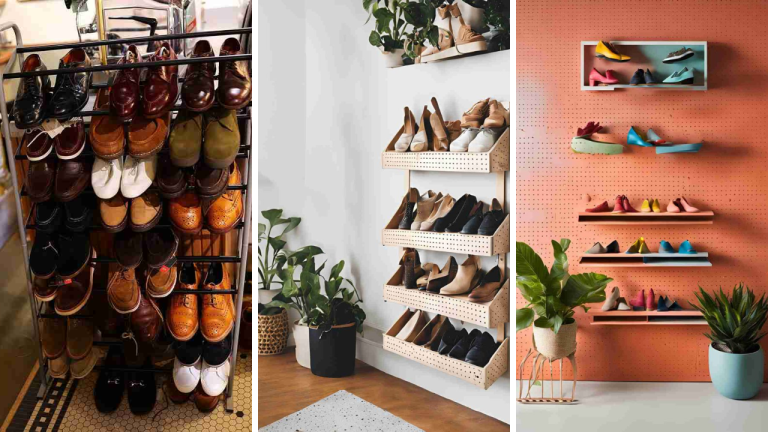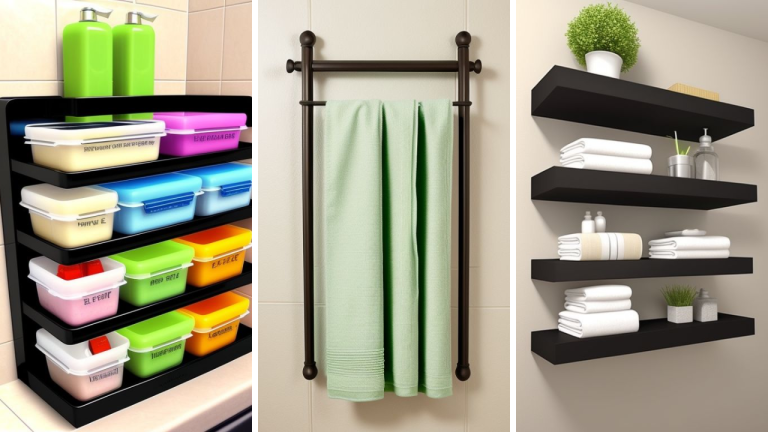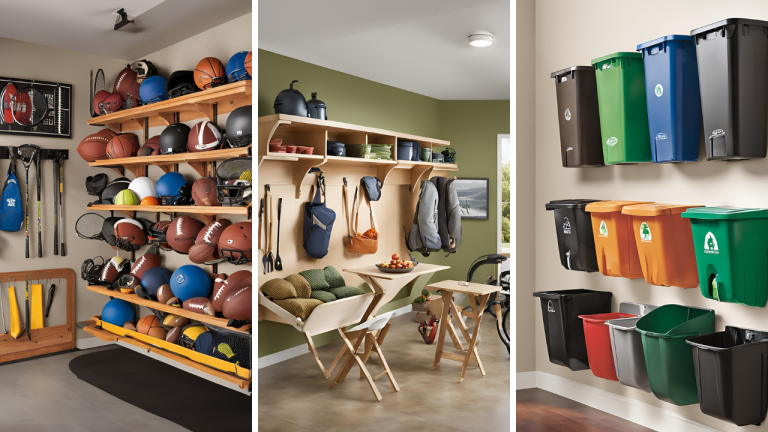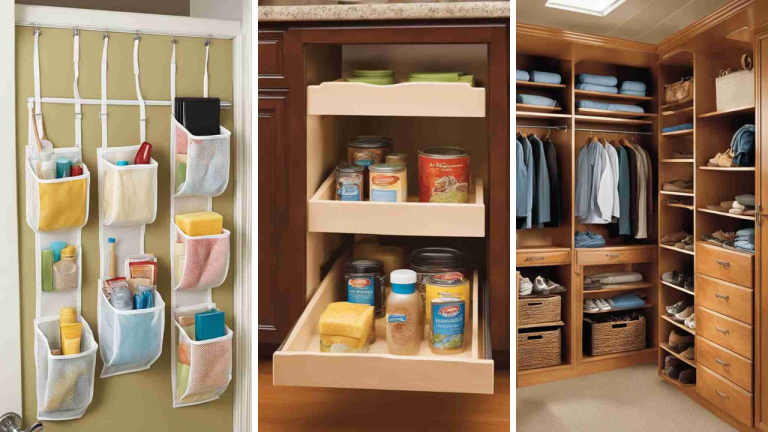Homeschooling is a beautiful and rewarding journey, but it can also be a challenging one—especially when it comes to keeping everything organized. A well-organized homeschool environment makes learning more efficient, less stressful, and even a bit more fun! Whether you’re a seasoned homeschooler or just getting started, the right organization ideas can transform your space and routine.
Here are 21 Homeschool Organization Ideas to inspire and help you create an organized, stress-free learning environment for you and your children. In this article, we’ll explore practical tips that cater to various needs and learning styles.
1. Create a Dedicated Homeschool Space
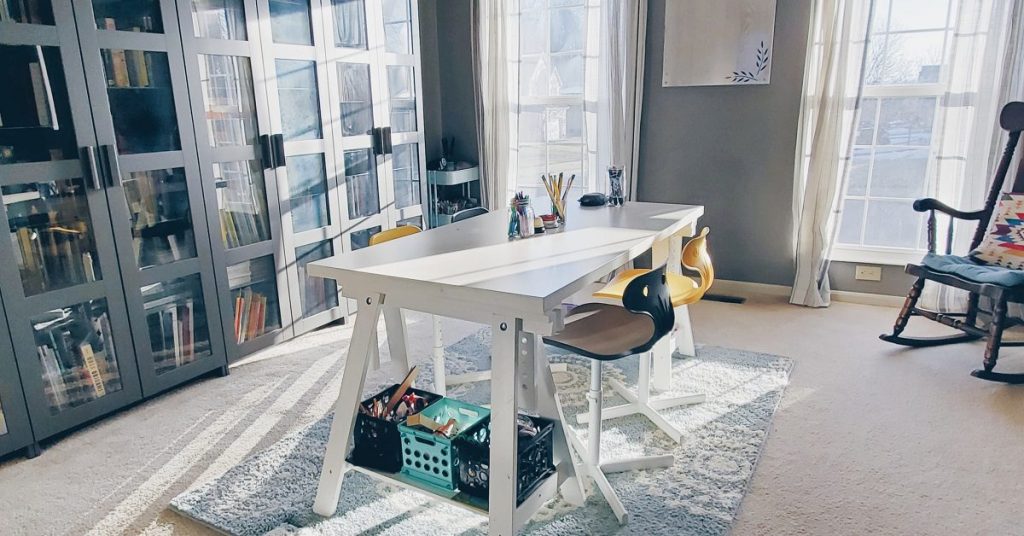
One of the best things you can do for your homeschool is to establish a dedicated learning area. This doesn’t mean you have to transform a whole room (though that’s ideal); it could be a corner of the living room or a quiet nook in the kitchen. The key is to have a designated area that minimizes distractions and is tailored to the needs of your children.
By setting up a specific space for learning, you signal to your children that it’s time to focus. Use tables or desks, comfortable chairs, and shelves to create an environment that encourages concentration. You can make the space inspiring by adding educational posters, plants, or motivational quotes. The more organized and welcoming the space, the better your children will feel about settling down to learn.
If space is limited, use multifunctional furniture—like storage benches or collapsible tables—to maximize the available room. Remember, it’s all about creating an atmosphere that supports both focus and creativity.
2. Use Storage Bins for Easy Access
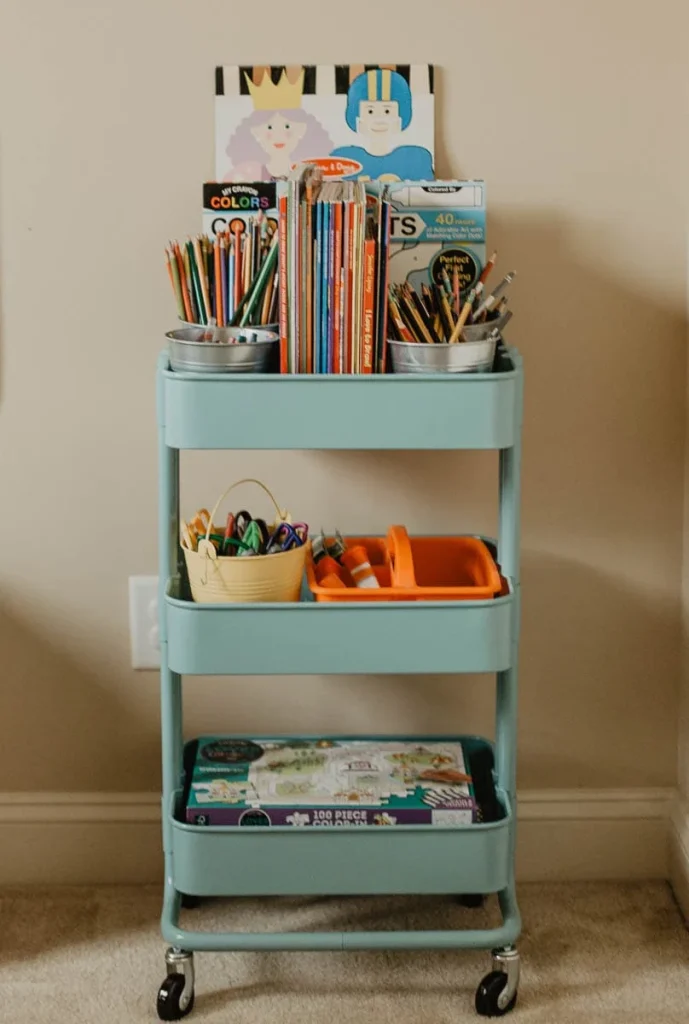
Storage bins are your best friend when it comes to organizing homeschool materials. They help you keep everything in its place while making it easy to access. You can use clear plastic bins to store books, supplies, and learning tools, ensuring that each category has its designated spot.
Label the bins according to the subjects or types of materials they contain—Math, Science, Art, and so on. This will make it easier for your kids to find exactly what they need without a lot of searching. Another helpful tip is to use color-coded bins to match the corresponding subject. This system works wonders for visual learners, helping them quickly identify where everything goes.
For smaller items like pencils, crayons, and scissors, smaller bins or drawer organizers can help keep things tidy and accessible. You’ll never have to worry about lost supplies again!
3. Set Up a Weekly Schedule
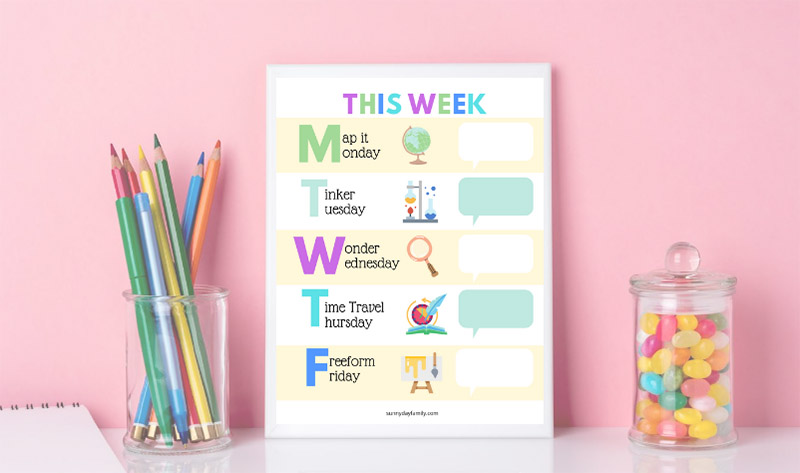
A clear and predictable schedule is crucial for homeschooling success. Not only does it help you stay on track, but it also provides your children with structure and routine. Start by creating a weekly schedule that includes time for each subject, breaks, meals, and extracurricular activities.
You can make the schedule visible to everyone in the family by hanging it on the wall in your homeschool area. This way, both you and your children can refer to it throughout the day. It’s also helpful to include specific times for review, extra practice, or project work so that you don’t feel rushed or disorganized.
Using a large wall calendar, planner, or even a digital app can be incredibly beneficial. Keeping things consistent will help everyone get into a rhythm and make homeschooling feel less overwhelming.
4. Invest in Vertical Storage

When you’re homeschooling, every square inch of space counts. Vertical storage solutions—such as tall shelves, wall-mounted racks, and over-the-door organizers—can help you store books, supplies, and materials without taking up valuable floor space.
Tall shelving units or bookshelves are great for storing books by subject or grade level. You can also use wall-mounted hooks or baskets for items like backpacks, coats, and lunchboxes. By going vertical, you free up room for other activities or allow for easier access to your homeschool tools.
Another benefit of vertical storage is that it encourages tidiness. When everything has its place, it’s easier for your children to put things away without much prompting. Whether you’re working with a tiny corner or a spacious room, vertical storage can maximize your space while keeping things organized.
5. Create a Rotating System for Learning Materials

Keeping your homeschool materials fresh and exciting is key to maintaining your children’s interest in learning. A rotating system allows you to switch out learning tools, books, and activities every few weeks, preventing boredom and sparking new curiosity.
For example, you can rotate a set of books on a particular topic—like animals, space, or geography—so that your children always have something new to look forward to. You can also alternate between educational games, hands-on activities, and digital learning tools, keeping your homeschool routine dynamic.
This method helps avoid clutter while ensuring that your children are constantly engaged with fresh material. It also provides a fun way to introduce new subjects and keeps the learning process exciting!
6. Label Everything Clearly
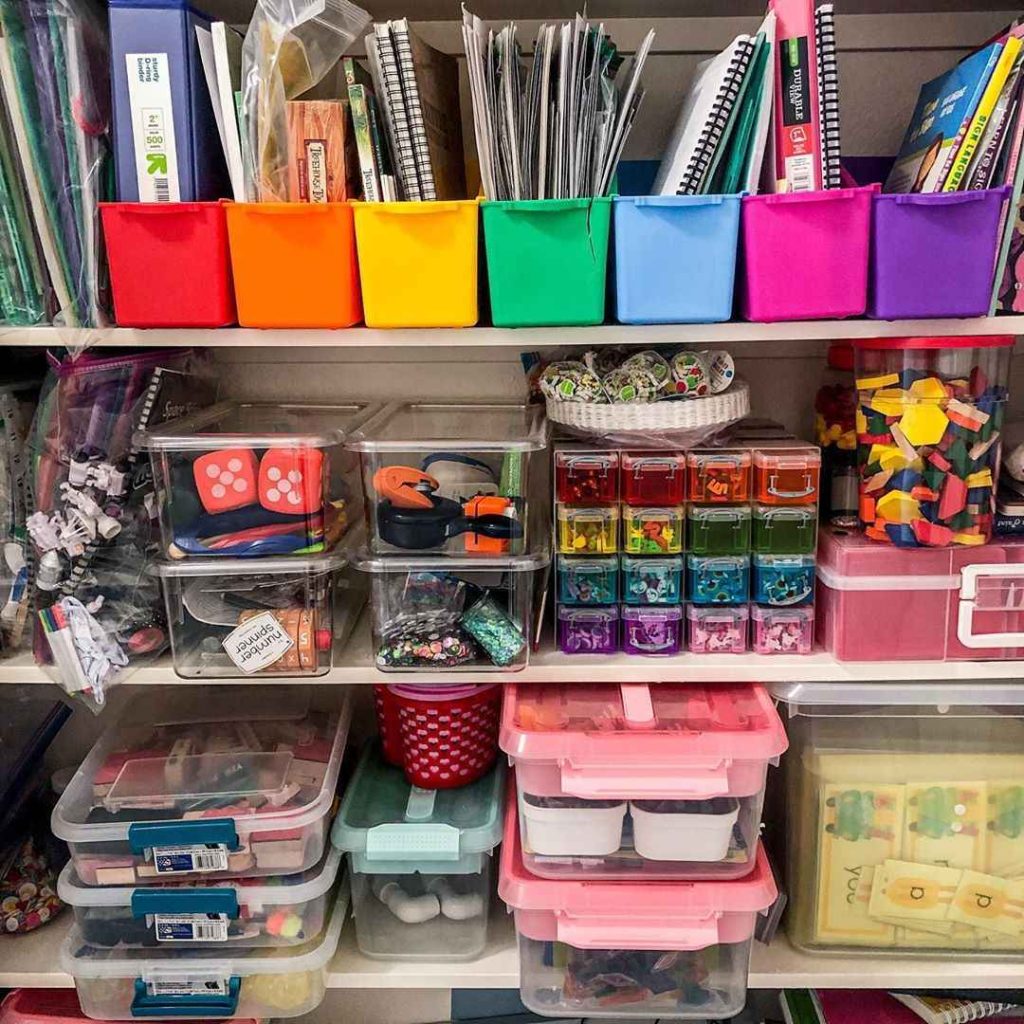
When homeschooling, organization is key, and labeling is a simple but effective way to stay on top of things. Label your bins, shelves, drawers, and even individual books with clear and easy-to-read labels. This system works wonders not only for you but also for your children. It teaches them responsibility by encouraging them to put things back in their designated places.
Labels can be as simple or decorative as you like. You can print out labels on your computer or use a label maker for a more polished look. For younger children, consider using pictures alongside the text, so they can identify items without being able to read yet.
Don’t forget about labeling lesson plans, worksheets, and assignments as well. This ensures that you don’t misplace important documents and that your children know where to find their work.
7. Use a Filing System for Paperwork
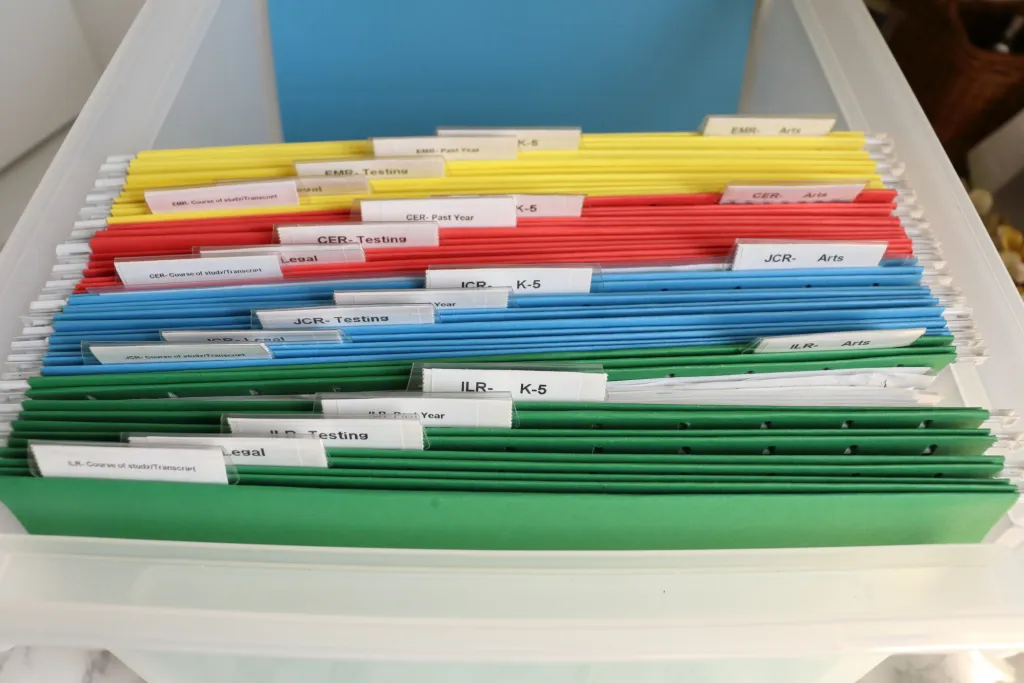
Homeschooling generates a lot of paperwork—assignments, lesson plans, progress reports, and more. A filing system will help you keep all that paper organized and easily accessible.
You can use a filing cabinet or hanging folders to organize paperwork by subject, month, or child. For example, have one folder for each subject or one for each child to keep their individual work separated. You can also use a binder system to hold worksheets, completed assignments, and lesson plans.
Keeping all paperwork in one place will save you from sifting through piles of loose paper when you need something quickly. Plus, it makes it easier to track your children’s progress over time and keep records for any legal requirements.
8. Make a Homeschool Calendar

Keeping track of important dates like holidays, field trips, exams, and appointments is essential to staying organized. A homeschool calendar can help you stay on top of it all. You can create a wall calendar or use a digital calendar to mark important dates and deadlines.
Consider adding a color-coding system to distinguish between different types of events. For instance, use one color for field trips, another for test dates, and another for holidays. This makes it easier to glance at your calendar and know what’s coming up next.
Having a homeschool calendar in place helps prevent scheduling conflicts and allows you to plan ahead for breaks, special projects, or anything else that requires extra preparation.
9. Incorporate Time Management Tools

Time management is essential when homeschooling, especially if you’re balancing multiple children or other responsibilities. Time management tools, like timers, apps, or visual clocks, can help keep everyone on track.
You can use a timer to allocate specific amounts of time for each subject, ensuring that you don’t spend too long on any one topic. Visual timers, like hourglasses or countdown clocks, are especially useful for younger children who need a concrete representation of time passing.
There are also apps and digital planners that allow you to create customized schedules for each child. Many of these tools have features that allow you to set goals, track progress, and adjust time as needed.
10. Keep a Daily/Weekly Planner for Mom
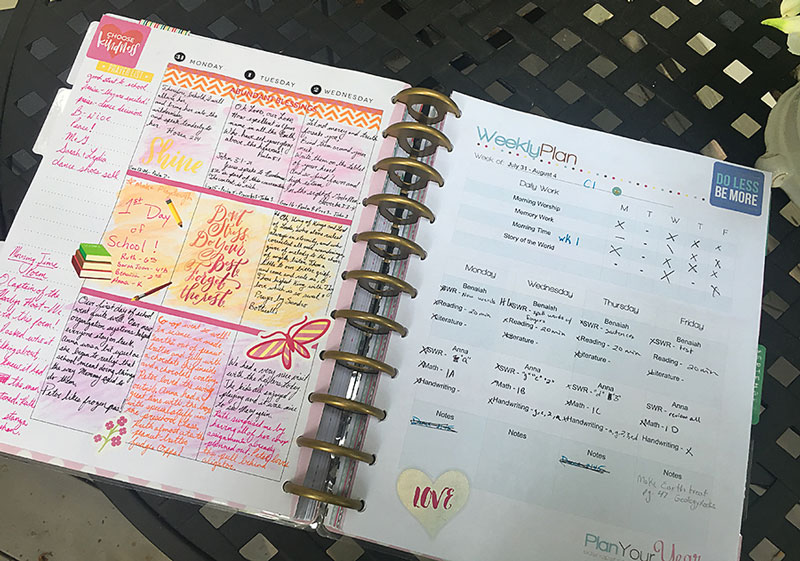
As the homeschooling parent, you’ll need a planner to track lesson plans, to-do lists, appointments, and any other tasks. A good planner will help you stay organized and ensure that nothing falls through the cracks.
You can choose a physical planner or a digital one, depending on your preferences. Some planners are specifically designed for homeschooling, with sections for lesson plans, attendance, and notes. Alternatively, you can create your own planner using an online tool like Google Calendar or an app that allows you to set reminders and keep track of daily tasks.
Having a planner will not only help you stay organized but also reduce stress by giving you a clear roadmap for each day and week.
11. Create an ‘Activity Jar’ for Breaks
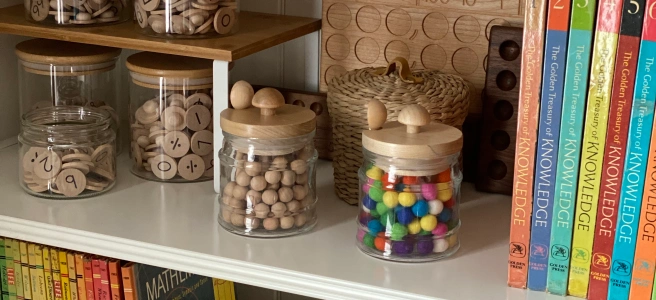
Long homeschool days can get tiring, especially for younger children who may need frequent breaks. An activity jar is a fun and easy way to keep break times interesting and refreshing.
Fill a jar with small pieces of paper that have different activities written on them. These could be quick games, stretching exercises, or creative tasks. When it’s time for a break, your children can pull an activity from the jar and get a quick mental refresh.
This system helps break up the day while also encouraging your children to be active, creative, or relaxed during their breaks.
12. Use Binders for Each Subject
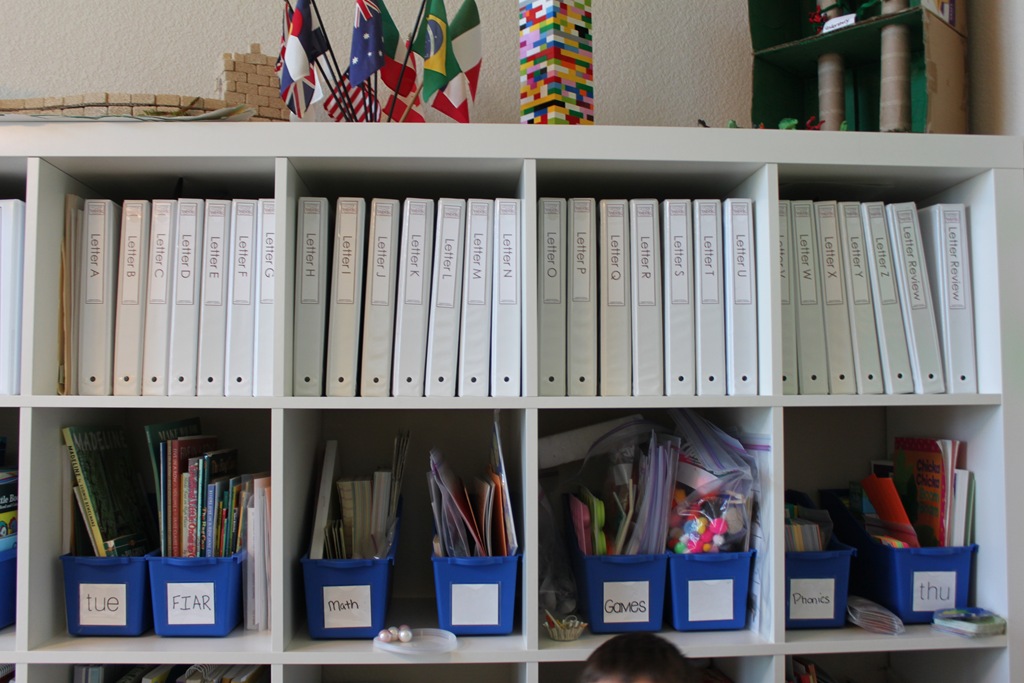
Organizing lesson plans, worksheets, and activities into binders is a simple yet highly effective strategy for keeping your homeschool materials neat and easily accessible. By creating a binder for each subject or even for each child, you can keep everything in one place without the risk of papers being lost or scattered.
Each binder can contain pocket dividers for storing worksheets, handouts, and notes. You can also include clear sheet protectors for important documents or projects you want to preserve. Label each binder with its subject name or child’s name to ensure that everyone knows where to find what they need.
This system helps maintain an organized structure for each subject, making it easy to access the materials you need for daily lessons and assessments. It’s also an excellent way to keep track of completed work and monitor your child’s progress over time.
13. Set Up an Easy-to-Use Art Station
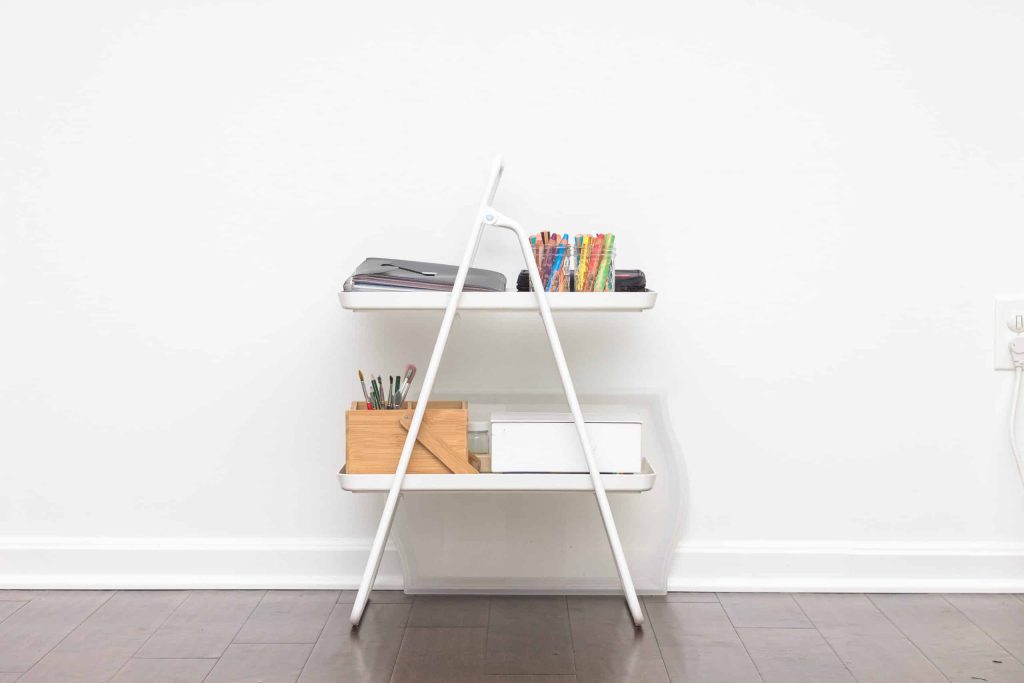
Creativity is a big part of homeschooling, and having an organized art station can encourage your children to engage in more artistic activities. Dedicate a specific area or cart to storing all your art supplies—crayons, markers, colored pencils, paper, glue, scissors, and more.
A rolling cart or a small table with drawers is a great solution for easy access and cleanup. You can organize the supplies by type (e.g., one drawer for markers, one for scissors) or by project (e.g., a drawer for holiday crafts). This will make it easy for your children to find what they need and put it away when they’re done.
An organized art station also eliminates the mess and clutter that often accompanies creative projects. By keeping everything in its designated place, you can foster a more productive and enjoyable art experience.
14. Organize by Learning Style
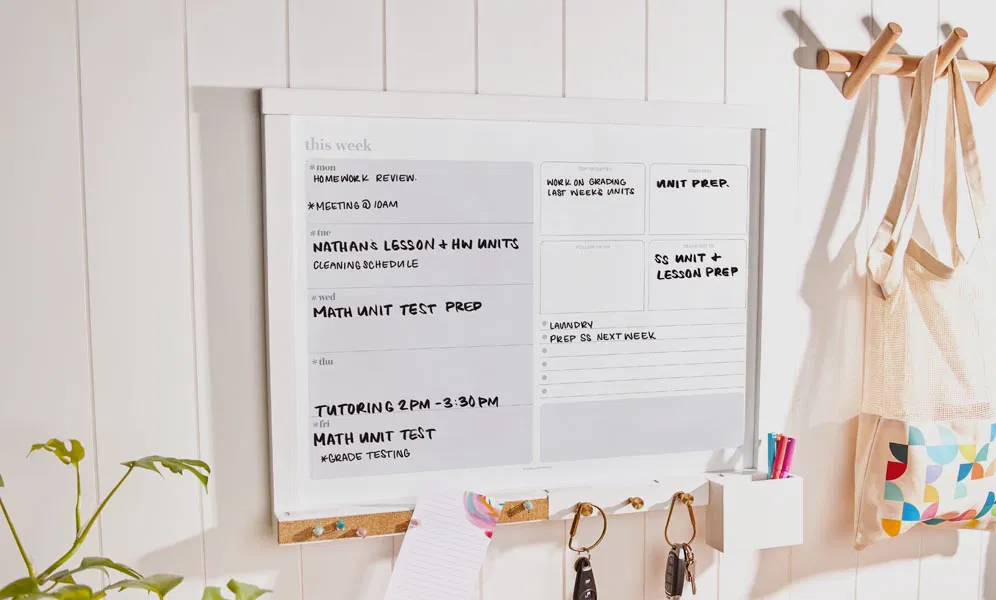
Every child learns differently, and understanding your child’s learning style is crucial to homeschooling success. Whether they’re visual learners, auditory learners, or kinesthetic learners, organizing your materials in a way that caters to their learning style can enhance their educational experience.
For example, for visual learners, use colorful charts, visual aids, and picture books. For auditory learners, incorporate audio books, podcasts, and music. Kinesthetic learners benefit from hands-on activities like building projects, experiments, or outdoor learning.
Organizing your homeschool materials by learning style ensures that your child’s needs are being met and allows them to engage with the material in a way that resonates with them. It also helps streamline the process of preparing lessons, as you can easily locate the right tools for each child’s specific needs.
15. Repurpose Household Items for Learning Tools
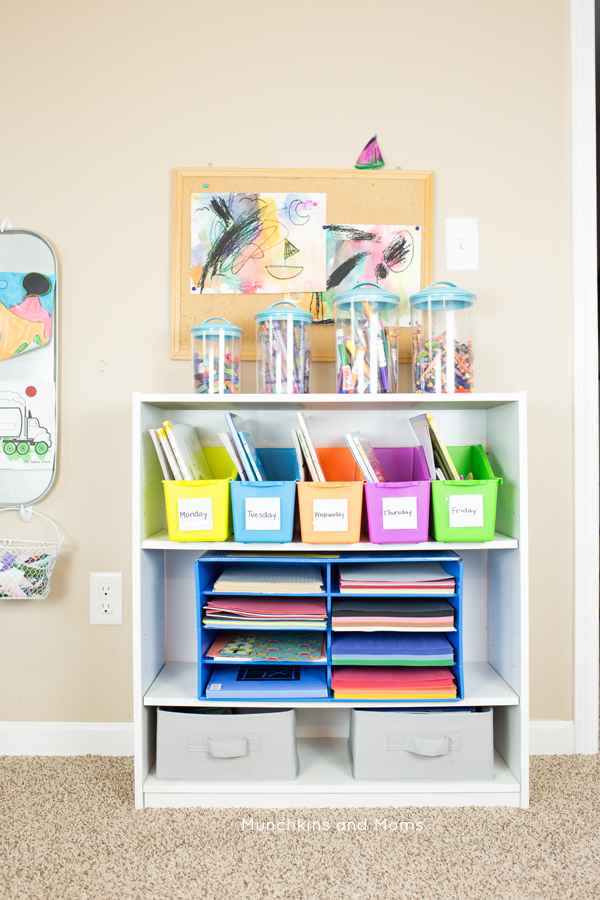
Repurposing household items for educational purposes is an inexpensive and creative way to add to your homeschool supplies. Instead of purchasing new materials, look around your home for items that can be turned into learning tools.
For instance, empty cereal boxes can be used for sorting games, old jars can become counting tools, or an egg carton can be used for a fun science experiment. Even kitchen utensils like spoons and measuring cups can be used for math lessons or to create art projects.
Repurposing not only saves you money but also encourages creativity. Plus, your children can have a hand in creating the tools they’ll use, making the learning experience more interactive.
16. Create a ‘Homework Station’ for Older Kids
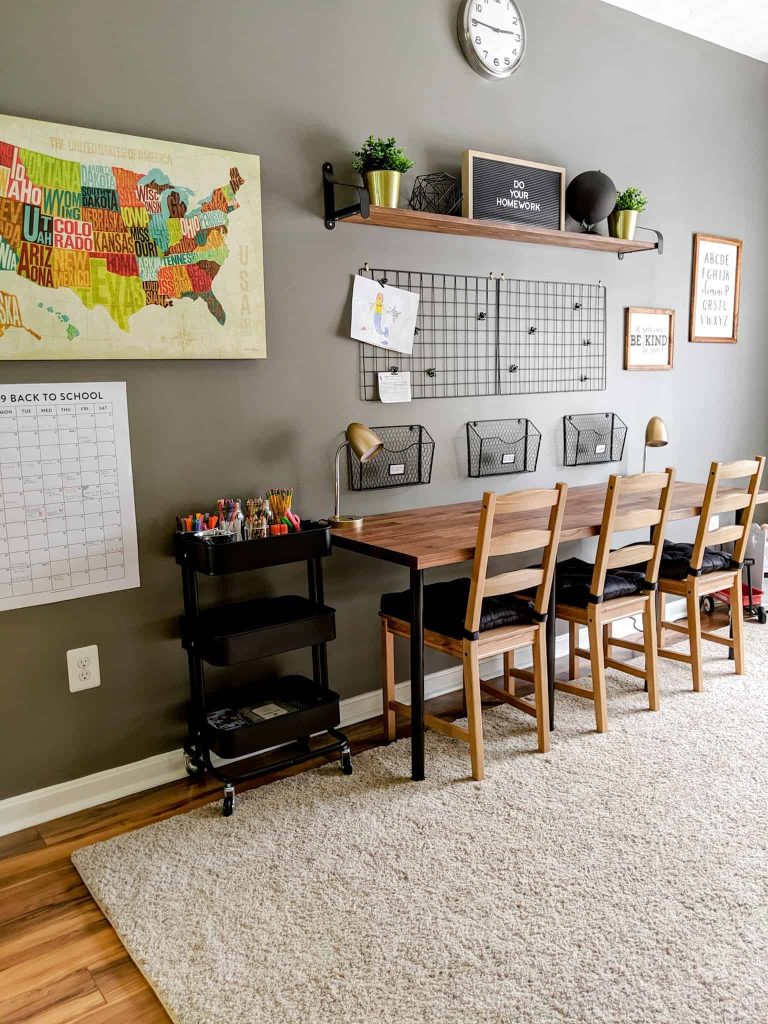
As your children get older, they’ll need a quiet space to complete independent work. A “homework station” is an excellent way to provide them with an environment conducive to focus and concentration. Set up a small desk or table where they can complete assignments, read, or study on their own.
Include everything they might need in this station—pens, paper, notebooks, highlighters, and even a calculator. If your child uses a computer for research or assignments, make sure the station is equipped with one, as well as headphones to block out distractions.
The goal of a homework station is to create an organized space where older children can work independently, fostering a sense of responsibility and discipline. It also prevents the clutter of schoolwork from spilling into other areas of the home.
17. Implement a ‘One In, One Out’ Rule
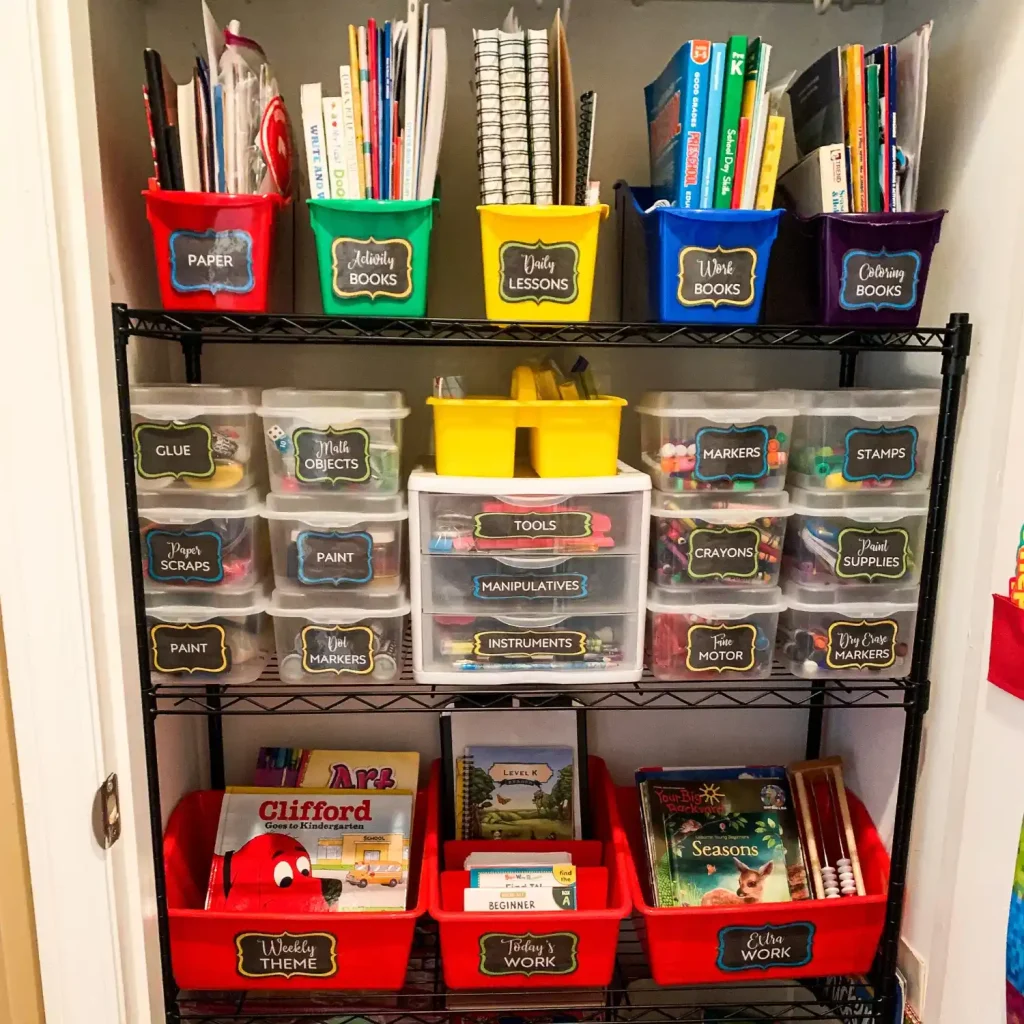
A common issue in homeschooling (and in life) is accumulating too much stuff. To maintain a clutter-free environment, implement a “one in, one out” rule. This means that for every new item you bring into your homeschool space—whether it’s a new book, toy, or supply—another item must be donated or discarded.
This rule can help keep the homeschool area from becoming overrun with materials that are no longer useful. It also teaches children about responsible consumption and organization. When they understand the importance of managing their belongings, they’ll be more likely to take ownership of the organization process.
By sticking to this rule, you can ensure that only the most useful and relevant materials remain in your homeschool space, creating a streamlined and efficient learning environment.
18. Use a Digital Organization System
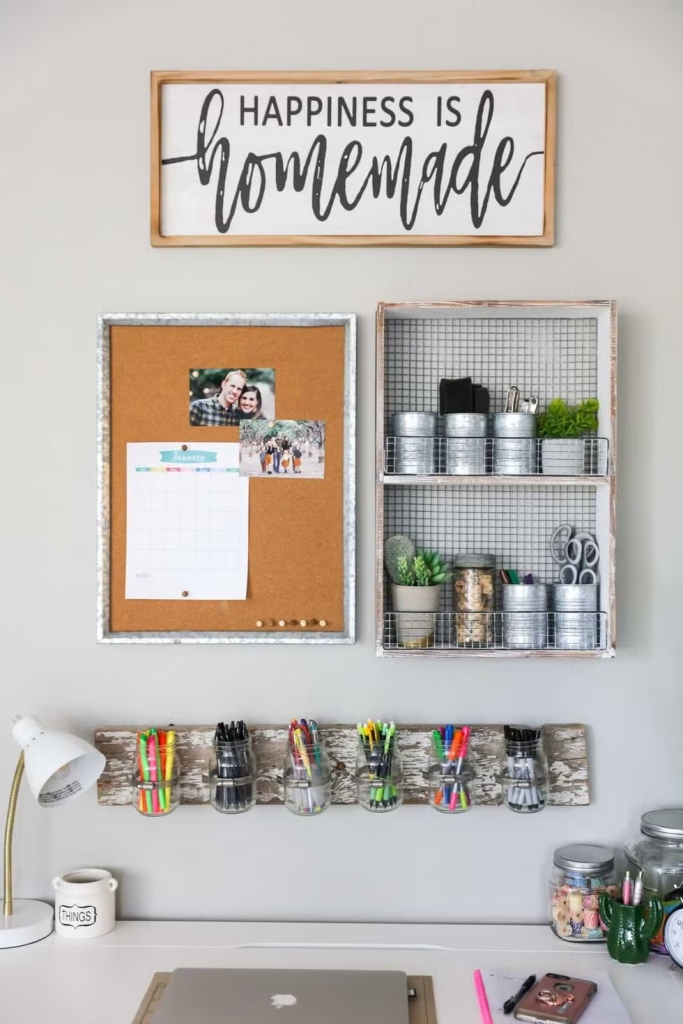
In today’s digital age, using an app or digital tool to organize your homeschool materials is both convenient and efficient. There are a variety of digital systems available that can help you keep track of lesson plans, assignments, grades, and student progress.
Apps like Trello, Google Drive, or Evernote can be great tools for managing lesson plans, files, and documents. You can store worksheets, digital textbooks, and teaching materials in these platforms, and even collaborate with your children to set learning goals.
Using digital organization systems offers the benefit of easy access, no matter where you are. Plus, they help you stay organized without having to deal with physical paperwork, which can quickly pile up.
19. Make Use of Color Coding
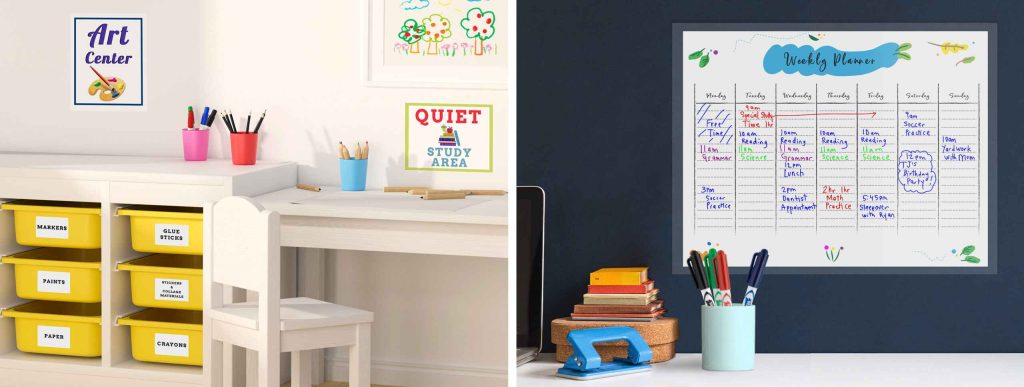
Color coding is a simple but highly effective strategy to organize your homeschool materials. By assigning different colors to various subjects, you can make it easier for everyone in the household to quickly locate what they need.
For example, use blue folders for math, red for language arts, green for science, and yellow for history. You can extend this system to binders, notebooks, and even storage bins. Color coding provides a visual cue that helps your children understand where everything belongs, making it easier to maintain organization.
This method not only helps with physical organization but also aids in memory retention. Associating specific colors with subjects can make it easier for children to recall information and stay on track with their learning.
20. Organize Group Learning Supplies
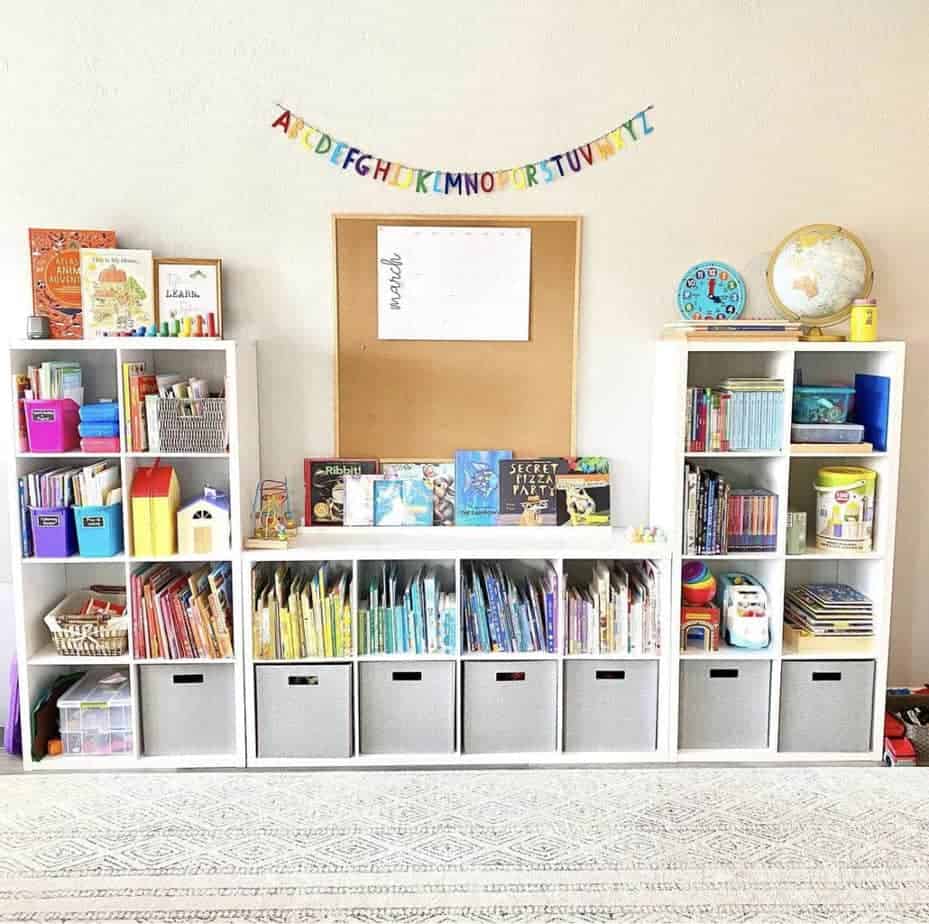
If you homeschool multiple children, managing shared learning materials can quickly become chaotic. Organize your group learning supplies, such as science kits, craft supplies, or educational games, in a central location.
Use labeled bins, shelves, or cubbies to store these shared items so that everyone knows where to find them. This organization method ensures that the materials are easy to access and reduces time spent searching for things.
Consider creating a shared learning space or central “supply closet” where you can store all materials for group projects or activities. This will help keep everything in order while preventing one child from monopolizing a particular resource.
21. Involve Your Kids in the Organization Process
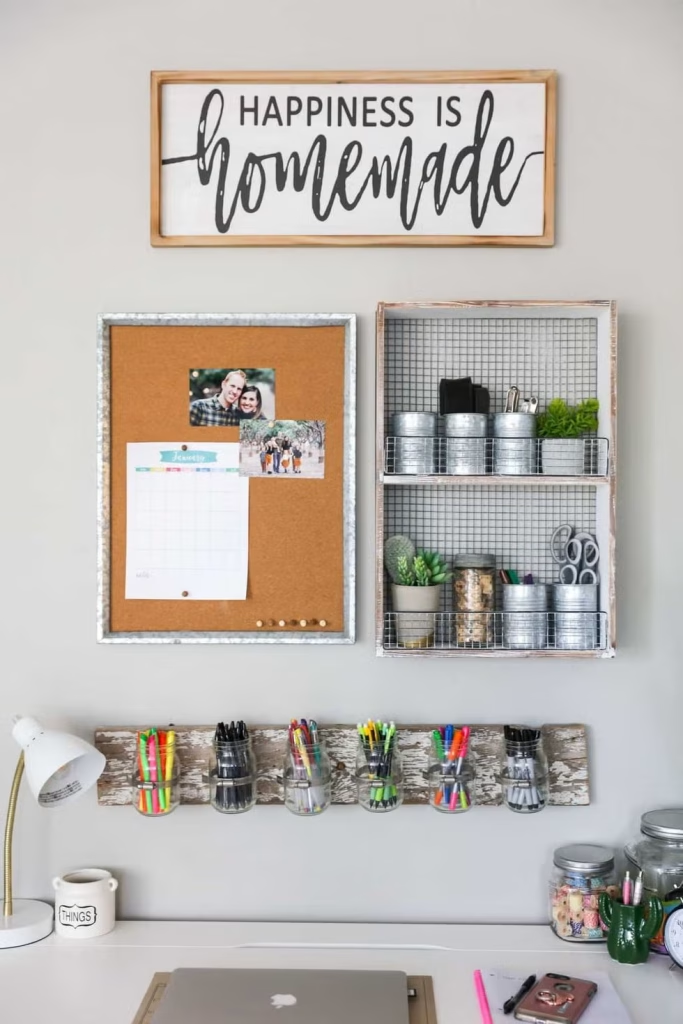
One of the best ways to maintain an organized homeschool environment is to involve your children in the process. Teaching them how to organize their learning materials and take responsibility for their space encourages them to take ownership of the process.
Set aside time each week or month to go through the homeschool space together, decluttering items that are no longer needed. Teach your children how to label and store materials properly so that everything is in its place.
When children participate in maintaining order, they learn valuable life skills like responsibility and organization, which will serve them well beyond their homeschool years.
Conclusion: Creating Your Perfect Homeschool Environment
Organizing your homeschool space doesn’t just create a more productive learning environment—it also helps reduce stress and increases the enjoyment of homeschooling for both parents and children. With these 21 homeschool organization ideas, you now have a toolkit of strategies to help streamline your routine, keep everything in order, and make homeschooling more enjoyable.
Remember that organization isn’t a one-size-fits-all process. You might need to experiment with a few different methods before you find what works best for your family. Whether it’s creating a dedicated homeschool space, using digital tools, or implementing a “one in, one out” rule, there are plenty of ways to make your homeschool environment more functional and enjoyable.
The key is to stay consistent and keep things simple. A little organization goes a long way in making homeschooling a smoother and more enjoyable experience for everyone involved.
Happy homeschooling!
